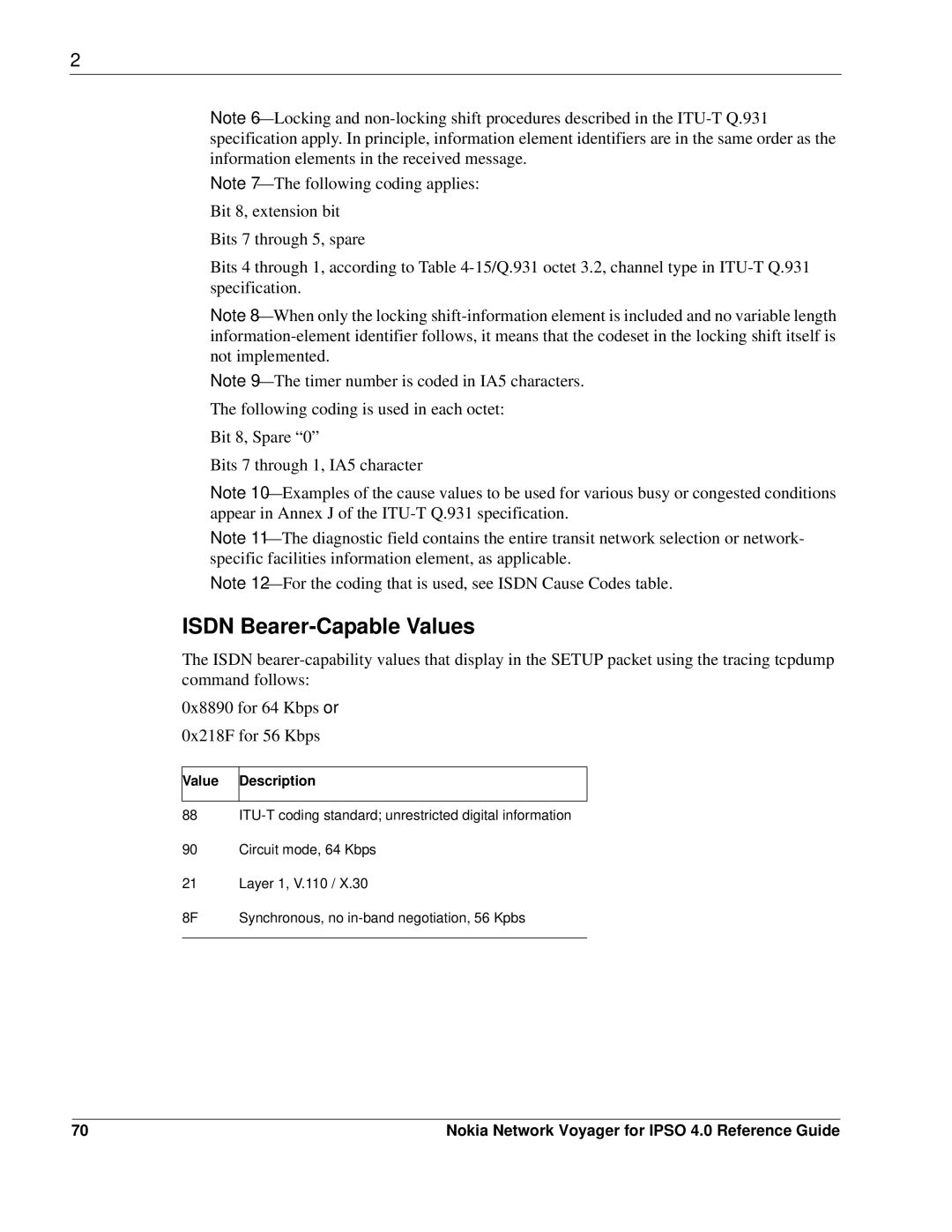
2
Note
Note
Bits 7 through 5, spare
Bits 4 through 1, according to Table
Note
Note
The following coding is used in each octet: Bit 8, Spare “0”
Bits 7 through 1, IA5 character
Note
Note
Note
ISDN Bearer-Capable Values
The ISDN
0x8890 for 64 Kbps or 0x218F for 56 Kbps
Value
Description
88
90Circuit mode, 64 Kbps
21Layer 1, V.110 / X.30
8F Synchronous, no
70 | Nokia Network Voyager for IPSO 4.0 Reference Guide |
